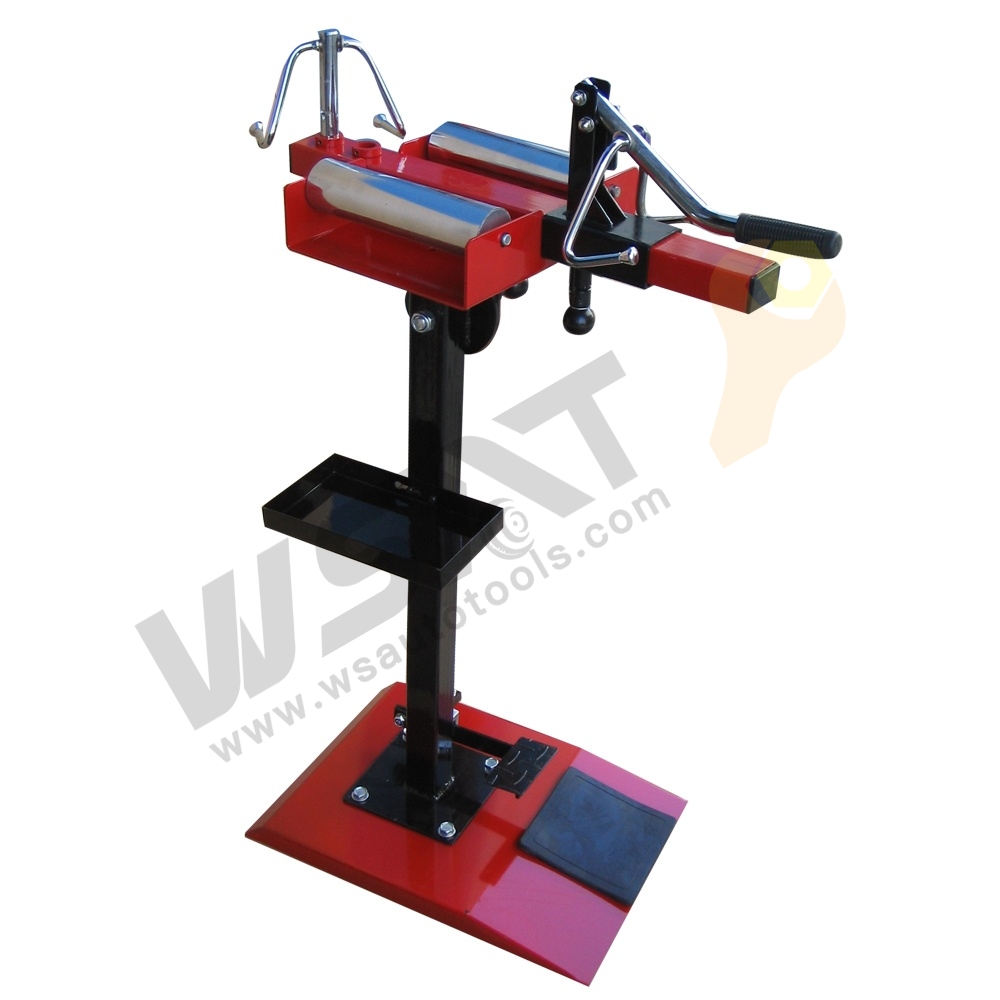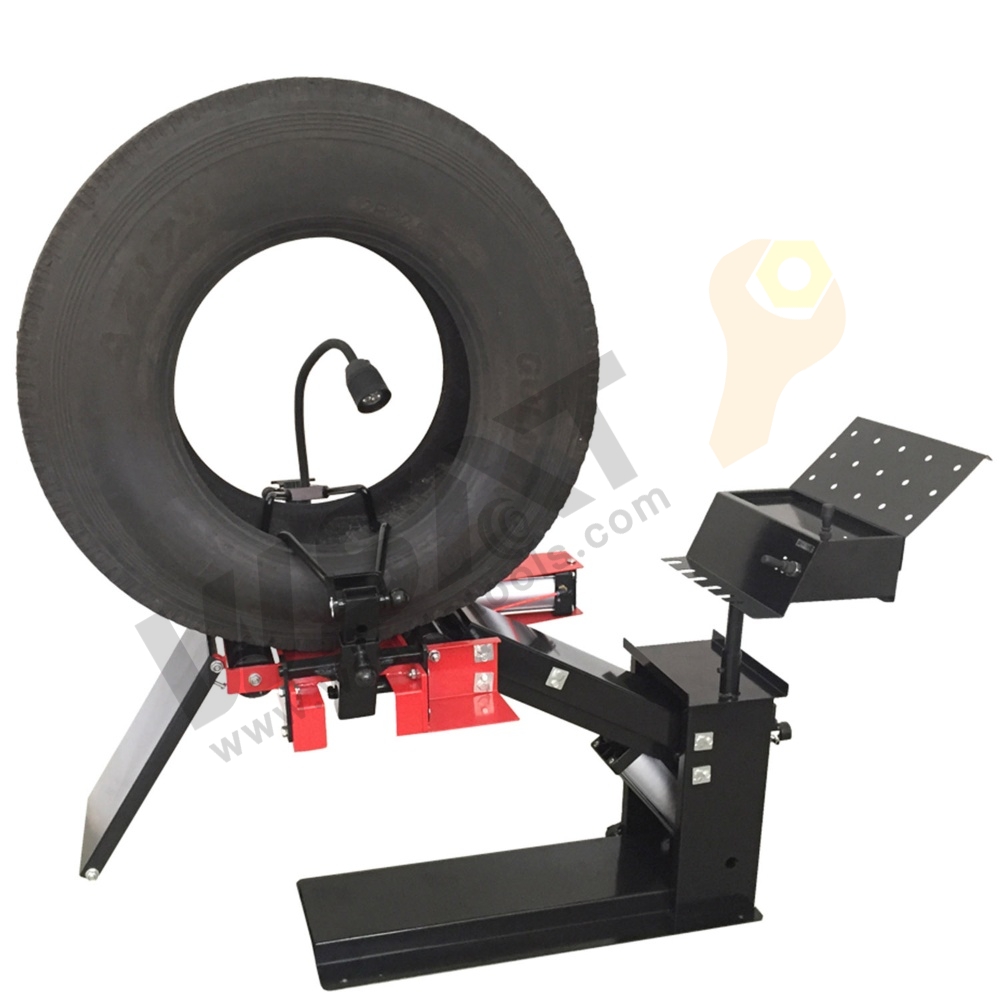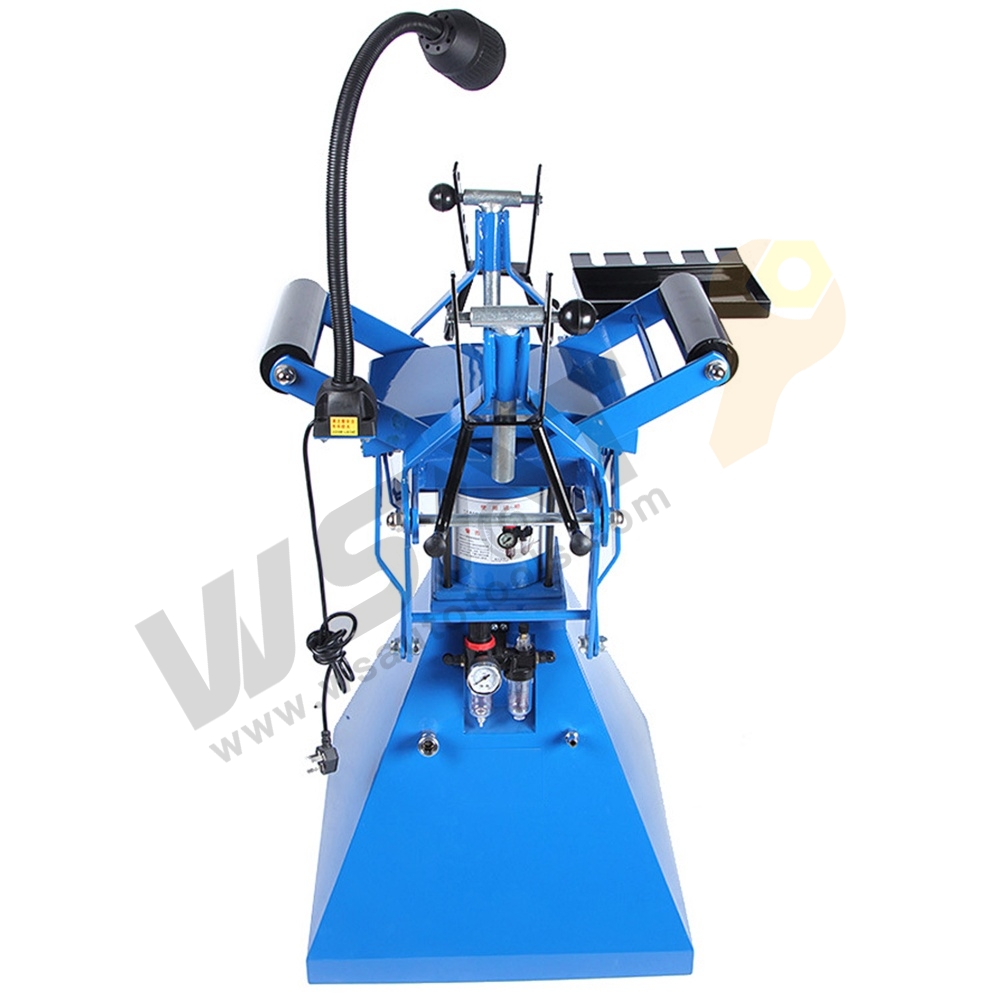What are Tire Spreaders?
Tire spreaders are machines designed to assist in expanding a tire, making it easier to inspect, repair, or fit onto a rim. These tools are particularly useful in tire shops and auto repair centers where tire handling and maintenance are a regular part of the workflow. Tire spreaders are employed to increase the width of the tire, allowing technicians to inspect the interior, replace damaged patches, or perform tire balancing.
By expanding the tire, tire spreaders create space for proper repairs, enabling efficient tire maintenance. Depending on the specific needs of a shop, tire spreaders come in different styles, each offering unique advantages based on power, speed, and capacity.
Winsen Manual Tire Spreader
NO.1 Manual Tire Spreaders
Manual tire spreaders are the most basic and affordable option available. As the name suggests, they require manual effort to operate, typically using a mechanical hand-crank system to widen the tire. While these spreaders are slower compared to their pneumatic and hydraulic counterparts, they can still be effective in certain settings, particularly in smaller shops or for less frequent use.
Advantages
Cost-Effective: Manual tire spreaders are less expensive than pneumatic or hydraulic models, making them an ideal choice for budget-conscious businesses or hobbyists.
Simplicity: These spreaders are straightforward and easy to use, with fewer parts that can break down, making maintenance relatively simple.
Portability: Because they are not reliant on external power sources, manual tire spreaders are portable and can be used in various locations.
Disadvantages
Limited Speed and Efficiency: The manual operation requires more time and physical effort, which can slow down workflow, especially in high-demand environments.
Limited Capacity: Manual spreaders typically have lower capacity and may not be suitable for heavy-duty tire sizes or commercial-grade repairs.
Winsen Pneumatic Tire Spreader with Working Light
NO.2 Pneumatic Tire Spreaders
Pneumatic tire spreaders utilize compressed air to expand the tire, making them faster and more efficient than manual models. They are often used in medium to large-sized tire shops where higher volume and quicker turnaround times are essential. Pneumatic spreaders are typically operated by a foot pedal or lever, which triggers the air compression to widen the tire automatically.
Advantages
Faster Operation: Pneumatic spreaders can complete the job much more quickly than manual models, which increases efficiency in tire repair shops with higher volumes of tires.
Reduced Physical Effort: The use of air pressure eliminates the need for manual cranking, reducing strain on the technician and increasing comfort during use.
More Versatile: Pneumatic tire spreaders can handle a wider range of tire sizes and are generally more powerful than manual models.
Disadvantages
Higher Cost: Pneumatic models are more expensive than manual spreaders, both in terms of initial investment and maintenance.
Dependence on Air Supply: These spreaders require a continuous supply of compressed air, which can limit portability or require additional infrastructure investment (e.g., an air compressor).
Winsen Pneumatic Tire Spreader with Working Light
NO.3 Hydraulic Tire Spreaders
Hydraulic tire spreaders represent the most powerful option, often found in high-performance shops or heavy-duty tire repair centers. These machines use hydraulic fluid to operate a piston or cylinder that extends the tire. Hydraulic spreaders offer precision and can handle the largest and most challenging tire sizes, making them ideal for commercial or industrial use.
Advantages
Maximum Power: Hydraulic systems provide significant force, allowing technicians to expand even the toughest and most durable tires with ease.
Precision: Hydraulic spreaders offer fine control over the amount of force applied, allowing for more precise tire handling and repair.
High Capacity: These spreaders can accommodate a wide variety of tire sizes, including larger tires found in trucks, agricultural equipment, and construction vehicles.
Disadvantages
High Cost: Hydraulic spreaders are the most expensive option due to their advanced technology and higher capacity.
Maintenance Complexity: The hydraulic system requires more maintenance and care to prevent leaks, damage, or wear, which can increase operational costs.
Less Portability: Due to their weight and need for a power supply, hydraulic spreaders are less portable than manual or pneumatic models.
Which Tire Spreader Offers the Best Value for Your Budget?
Choosing the right tire spreader largely depends on the specific needs of your shop and the volume of tire maintenance you perform.
Here's a quick breakdown of what each type offers in terms of value:
Manual Tire Spreaders: Best for small shops or personal use where occasional tire expansion is needed. They offer the best value for those on a tight budget and who only need to perform tire maintenance on a smaller scale.
Pneumatic Tire Spreaders: Ideal for medium-sized shops or those with moderate tire repair needs. They offer a good balance of speed, power, and price, making them a solid investment for shops looking to improve efficiency.
Hydraulic Tire Spreaders: Best suited for large, high-volume tire shops or commercial applications. Though they come with a higher price tag, hydraulic spreaders provide maximum power and precision, ensuring that your shop can handle the most demanding tire types.
Finally
In conclusion, the choice between manual, pneumatic, and hydraulic tire spreaders depends on your shop's needs, budget, and the types of tires you handle most frequently. While manual models are affordable and simple, they lack the speed and capacity of pneumatic and hydraulic versions. Pneumatic spreaders offer increased efficiency without the high cost of hydraulics, making them suitable for most mid-sized businesses. Hydraulic spreaders, although expensive, provide the highest level of performance and are ideal for high-demand, commercial applications.
By understanding the advantages and disadvantages of each type, you can make an informed decision that best aligns with your operational requirements and budget.








